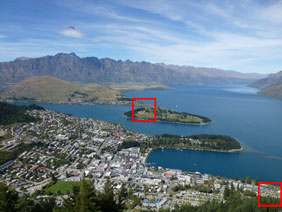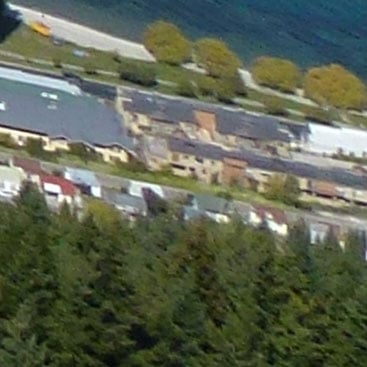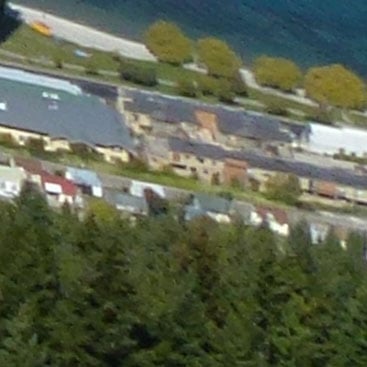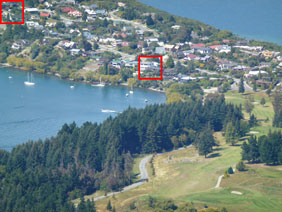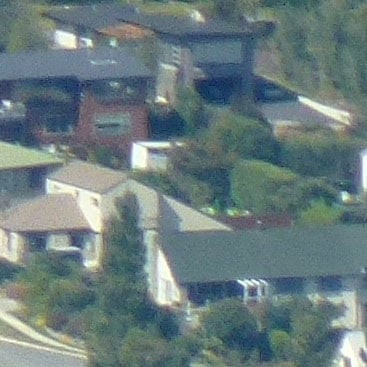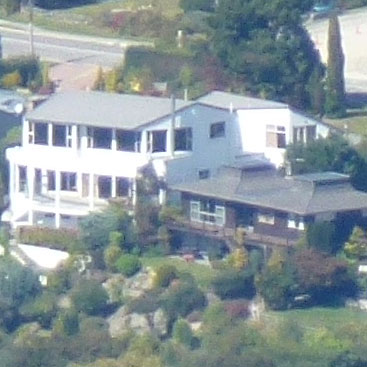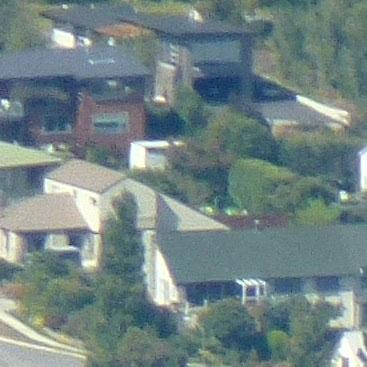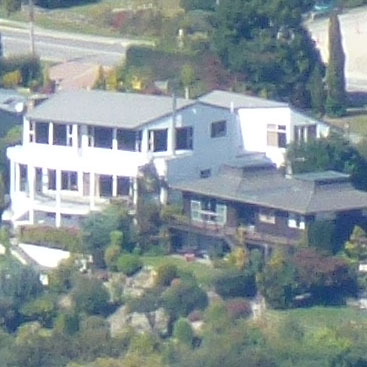Panasonic Lumix DMC-TZ20 / ZS10
-
-
Written by Gordon Laing
Quality
Panasonic Lumix DMC-TZ20 / ZS10 vs Canon IXUS 1000 HS / PowerShot SD4500 IS Real-life resolution
Panasonic Lumix TZ20 / ZS10 results : Real-life resolution / Noise / Noise vs SX230 HS / Noise vs TZ18/ZS8 / Handheld Night Shot
Panasonic Lumix TZ20 / ZS10 results : Real-life resolution / Noise / Noise vs SX230 HS / Noise vs TZ18/ZS8 / Handheld Night Shot
|
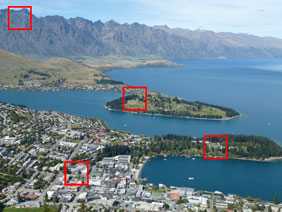 |
To compare real-life performance we shot the same scene with the Panasonic Lumix DMC-TZ20 / ZS10 and Canon IXUS 1000 HS / PowerShot SD4500 IS within a few moments of each other using their best quality JPEG settings and lowest sensitivities.
The lenses were adjusted to deliver as close a field-of-view as possible. Each camera was set to Program mode without intervention to see how they performed with default settings.
The image above was taken with the Panasonic Lumix DMC-TZ20 / ZS10 at 100 ISO with an exposure of 1/800 and the lens set to 6mm f3.7; the original file measured 5.48MB. As stated above, we allowed each camera to automatically select its own exposure in Program mode, in order to compare how they performed under default settings. Coincidentally both selected similar large apertures, which gratifyingly avoided diffraction.
The Lumix TZ20 / ZS10 sports 14 Megapixels to the IXUS 1000 HS / SD4500 IS’s 10 Megapixels, hence the tighter cropped areas for the former seen below. But does it record any more real-life detail? At first glance, the answer would appear to be not.
The TZ20 / ZS10’s crops suffer from a softness when viewed at 100% that’s lacking on the IXUS 1000 HS / SD4500 IS, with a particular lack of detail in areas of similar tonal value, such as the foliage. In contrast, the Canon crops look noticeably punchier.
At first this doesn’t look good for the Panasonic super-zoom, but to be fair, we are viewing the crops at 100% here. If you were to print images from both cameras at the same size, the artefacts from the TZ20 / ZS10 would appear slightly smaller than those from the IXUS 1000 HS / SD4500 IS due to its higher resolution, and they’d become closer in perceived quality.
But that’s not to take away from the fact that despite sporting 40% more Megapixels in total, the Lumix TZ20 / ZS10 is not capturing any more real-life detail than the IXUS 1000 HS / SD4500 IS. And while you may make normal-sized prints in practice, it’s hard for many of us not to zoom-into 100% for close examination on-screen, and it’s at this magnification that the TZ20 / ZS10 suffers.
It’s a fuzziness we’ve seen before on the earlier Lumix FZ100 which shares the same MOS sensor, although on the consumer-focused TZ20 / ZS10 there’s no way to adjust the noise reduction or sharpness, or save in RAW for tweaking later.
As such you have to study the images from the TZ20 / ZS10 and decide if you’re happy with the way they look, as there’s not a great deal you can do to improve them. Those who are happy to view at reduced sizes or make normal-sized prints almost certainly won’t be bothered, but anyone who expects to view crisp details at 100% on-screen will become frustrated.
Scroll down to see how the new 16x zoom lens performs at its widest and longest focal lengths, or head over to our Lumix TZ20 / ZS10 High ISO Noise results page to see how the camera performs across its sensitivity range, or if you’ve seen enough already, head straight to our Verdict.
PS – a quick note on the GPS accuracy: we tested the TZ20 / ZS10 in exactly the same position as the earlier TZ10 / ZS7, so we decided to compare their recorded GPS details. Both cameras reported virtually identical Longitudinal positions (differing by just over two tenths of a second). Strangely though, the reported Latitudes were actually 1.3 seconds apart – see screengrabs from their respective EXIF headers below). If you enter the co-ordinates into Google Earth, the older TZ10 / ZS7 is a few meters off, while the new TZ20 / ZS10 is almost bang-on.
Panasonic Lumix DMC-TZ20 / ZS10 GPS reading | Panasonic Lumix DMC-TZ10 / ZS7 GPS reading | |
Reading taken from far right corner of Skyline Gondola balcony | Reading taken from far right corner of Skyline Gondola balcony |
We also took a reading using a Garmin GPSmap 60CSx handheld unit, which after locking onto nine satellites and reporting an accuracy of +/-8 feet, reported a position of 45; 01; 35.7 South by 168; 38; 59.28 East. Entered into Google Earth, this again landed almost on top of our exact shooting location.
Panasonic Lumix DMC-TZ20 / ZS10 | Canon IXUS 1000 HS / PowerShot SD4500 IS | |
 |  | |
f3.7, 100 ISO | f3.4, 125 ISO | |
 |  | |
f3.7, 100 ISO | f3.4, 125 ISO | |
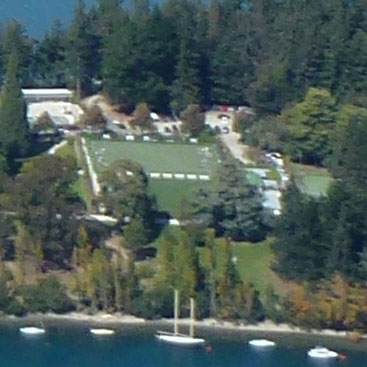 |  | |
f3.7, 100 ISO | f3.4, 125 ISO | |
 | 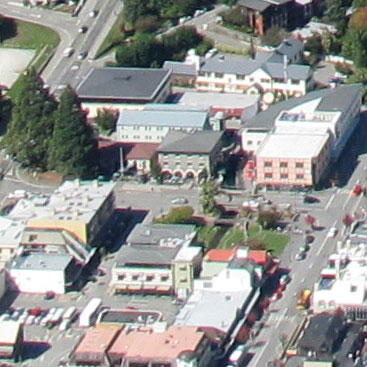 | |
f3.7, 100 ISO | f3.4, 125 ISO |
Panasonic Lumix DMC-TZ10 / ZS7 Real-life sharpness when zoomed-out (Aperture Priority)
To compare real-life performance when zoomed-out, we shot this scene with the Panasonic Lumix DMC-TZ20 / ZS10 in Aperture Priority mode at all f-numbers. As before, the Lumix TZ20 / ZS10 was set to its lowest sensitivity and best-quality JPEG settings. The crops below are taken from the areas marked with the red rectangles and presented here at 100%. At first glance the Lumix TZ20 / ZS10 delivers pretty respectable optical results when fully zoomed-out. Even in the far corners, there’s few if any artefacts to mention. Look closely and you’ll see the image become a little softer due to diffraction at f5.6 and smaller, as you’d expect, but luckily the camera understands this and tends to select its largest apertures in the automatic modes. Now scroll down to see how it performs when fully zoomed-in. Alternatively skip straight to our High ISO Noise results, or our Verdict.
|
Panasonic Lumix DMC-TZ20 / ZS10 Real-life sharpness when zoomed-in (Aperture Priority)
To compare real-life performance when zoomed-in, we shot this scene with the Panasonic Lumix DMC-TZ20 / ZS10 in Aperture Priority mode at all f-numbers. As before, the Lumix TZ20 / ZS10 was set to its lowest sensitivity and best-quality JPEG settings. The crops below are taken from the areas marked with the red rectangles and presented here at 100%. Like all super-zoom cameras, the Lumix TZ20 / ZS10 loses contrast at its longest focal length – that’s the compromise of having such a long zoom range from a single lens. But the good news here is there are again few if any other optical artefacts to worry about. There may be some correction going on behind the scenes, but the end result are JPEGs which don’t suffer from obvious fringing, distortion or vignetting. As for the aperture, there’s only two settings when fully zoomed-in. Conventional wisdom would suggest avoiding the smallest f6.3 setting to minimise softness due to diffraction, but looking closely at the crops, we’d say the f6.3 setting is slightly sharper than the one at f5.9. Now let’s check out how the camera performs across its sensitivity range in our Panasonic Lumix TZ20 / ZS10 High ISO Noise results. Alternatively if you’ve already seen enough, head straight to our Verdict!
|
Panasonic Lumix DMC-TZ20 / ZS10 vs Canon PowerShot SX230 HS High ISO Noise
Panasonic Lumix TZ20 / ZS10 results : Real-life resolution / Noise / Noise vs SX230 HS / Noise vs TZ18/ZS8 / Handheld Night Shot
Panasonic Lumix TZ20 / ZS10 results : Real-life resolution / Noise / Noise vs SX230 HS / Noise vs TZ18/ZS8 / Handheld Night Shot
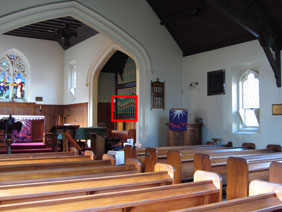 |
|
To compare noise levels under real-life conditions we shot this scene with the Canon PowerShot SX230 HS and Panasonic Lumix DMC-TZ20 / ZS10 within a few moments of each other using their best-quality JPEG settings and at each of their ISO settings.
The lenses were adjusted to deliver as close a field-of-view as possible. Each camera was set to Program to see how they performed with default settings; Contrast enhancers were disabled as they can introduce noise.
The image above was taken with the Canon PowerShot SX230 HS at 100 ISO with an exposure of 0.8 seconds and the lens set to 7.7mm f3.5; the original file measured 2.4MB. As stated above, we allowed each camera to automatically select its own exposure in Program mode, in order to compare how they performed under default settings.
Both the PowerShot SX230 HS and Lumix TZ20 / ZS10 share (C)MOS sensors, but with quite different resolutions: 12 and 14 Megapixels respectively. This accounts for the difference in the areas of the crops when viewed at 100%, but the big question is whether the lower resolution of the Canon allows it to better handle noise, and or whether the higher resolution of the Panasonic allows it to capture finer detail.
This question is answered in the very first pair of crops, taken with each camera set to their minimum sensitivity of 100 ISO. Pixel-peepers may notice the Canon PowerShot SX230 HS crop has a sprinkling of noise, but it’s considerably cleaner than the output of the Lumix TZ20 / ZS10, which even at 100 ISO is looking quite patchy in comparison. The Canon crop definitely exhibits lower noise, but to our eyes there’s also no extra detail in the Panasonic crop.
To be fair, the Canon crop also looks punchier due to greater digital sharpening which could of course also be applied to the Panasonic, although doing so would make its noise artefacts even more visible. The bottom line is there’s very little adjustment in terms of image processing on both cameras, so their default output is very important – and there’s few who’d choose the TZ20 / ZS10 over the SX230 HS based on the image quality at 100 ISO alone.
Moving on to 200 ISO, the Lumix TZ20 / ZS10 at least delivers a result that’s not a great deal different from its base sensitivity. The PowerShot SX230 HS is however showing a little more noise texture than before, but it remains cleaner and preferable to its rival.
At 400 ISO, the Panasonic has become patchier, no doubt due to an increase in noise reduction to wipe out noise. This has had a detrimental impact on the image, with subtle tonal differences becoming hard to discern and edges becoming poorly defined. The SX230 HS is also suffering more than before, but again remains cleaner and crisper than the TZ20 / ZS10.
The story continues at 800 ISO where the Lumix becomes patchier with ugly electronic-looking artefacts and progressively less definition: the edges are becoming quite rough, while the subtle tones between the organ pipes has seen them almost blur into one mass towards the top. Meanwhile the PowerShot image is also suffering from increased artefacts, softening and a gradual loss of saturation, but again side-by-side, there’s few who’d choose the Panasonic over it.
There’s a big drop in quality from both models at 1600 ISO, although the Canon still enjoys a comfortable lead. This represents the top of the ISO scale at full resolution from the Panasonic, with the High Sensitivity preset taking over at a greatly reduced resolution of 3 Megapixels. Even with pixel-binning though, the TZ20 / ZS10 image at 3200 ISO isn’t a patch on the 3200 ISO full resolution sample from the Canon.
Both cameras also offer a composite mode which stacks multiple images in an attempt to reduce noise. In each mode, the ISO is set automatically, and give this scene the Canon and Panasonic selected 800 and 640 ISO respectively. The TZ20 / ZS10 version may be lacking the noise of its single image mode, but is very soft and ill-defined. In contrast, the SX230 HS sample is much cleaner and detailed despite a slightly higher sensitivity, and if you compare it to the single frame at 800 ISO above, it’s a visible improvement.
Judging from the samples on this page, there’s be few if any who’d choose the Panasonic Lumix TZ20 / ZS10 over the Canon PowerShot SX230 HS based on image quality alone. The push to 14 Megapixels coupled with aggressive noise reduction has delivered images packed with artefacts from the lowest sensitivity, which simply look worse than the SX230 HS. We hoped for less noise from the lower resolution of the Canon sensor and got it, but sadly there’s no visible advantage in real-life detail to the higher resolution Panasonic.
It’s a lose-lose situation for the TZ20 / ZS10. This is a shame since so much else about the TZ20 / ZS10 works so well, and as you’ll discover throughout this review, it enjoys many benefits over the SX230 HS. But ultimately a camera is about capturing images and the bottom line is the Canon PowerShot SX230 HS simply delivers visibly better quality results than its super-zoom rival. Canon followers will also be relieved to note the small jump from the 10 Megapixels of the first PowerShot ‘HS’ models to 12 Megapixels here hasn’t had a negative impact on noise.
So overall a great result for the Canon PowerShot SX230 HS here, at least compared to its biggest rival. There may still be more noise than we’d like to see on its images, but they remain a big improvement over the TZ20 / ZS10, making it the preferred super-zoom for those who rank image quality as their priority.
To see how the TZ20 / ZS10 compares against the Lumix TZ18 / ZS8 with its CCD sensor, see our Lumix TZ20 / ZS10 vs TZ18 / ZS8 High ISO Noise results. Alternatively, check out our Lumix TZ20 / ZS10 Handheld Night Shot results page, or if you’ve seen enough, skip-ahead to our sample images or verdict.
Canon PowerShot SX230 HS | Panasonic Lumix DMC-TZ20 / ZS10 | |
 |  | |
100 ISO | 100 ISO | |
 |  | |
200 ISO | 200 ISO | |
 |  | |
400 ISO | 400 ISO | |
 |  | |
800 ISO | 800 ISO | |
 |  | |
1600 ISO | 1600 ISO | |
 |  | |
3200 ISO | High Sensitivity Preset (here at 3200 ISO and 3 Mpixels) | |
 |  | |
Low light preset (here at 1600 ISO and xx Mpixels) | High Sensitivity Preset (here at 3200 ISO and 3 Mpixels) | |
 |  | |
Handheld Night Scene (here at 800 ISO) | Handheld Night Shot (here at 640 ISO) |
Panasonic Lumix TZ18 / ZS8 vs Panasonic Lumix TZ20 / ZS10 High ISO Noise
Panasonic Lumix TZ20 / ZS10 results : Real-life resolution / Noise / Noise vs SX230 HS / Noise vs TZ18/ZS8 / Handheld Night Shot
Panasonic Lumix TZ20 / ZS10 results : Real-life resolution / Noise / Noise vs SX230 HS / Noise vs TZ18/ZS8 / Handheld Night Shot
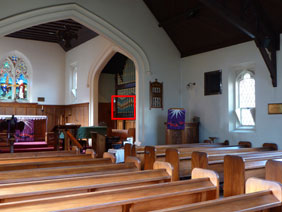 |
|
To compare noise levels under real-life conditions we shot this scene with the Panasonic Lumix DMC-TZ18 / ZS8 and Lumix DMC-TZ20 / ZS10 within a few moments of each other using their best-quality JPEG settings and at each of their ISO settings.
The lenses were adjusted to deliver as close a field-of-view as possible. Each camera was set to Program to see how they performed with default settings; Contrast enhancers were disabled as they can introduce noise.
The image above was taken with the Panasonic Lumix TZ18 / ZS8 at 100 ISO with an exposure of 1/2 a second and the lens set to 6mm f3.7; the original file measured 5.49MB. As stated above, we allowed each camera to automatically select its own exposure in Program mode, in order to compare how they performed under default settings.
Both cameras share the same 14.1 Megapixel resolution and the same 16x optical zoom lens, so what you’re seeing here is a comparison between their respective sensor technology and processing styles: the TZ18 / ZS8 employs a CCD sensor, compared to CMOS on the TZ20 / ZS10.
In our first set of crops, taken with each camera set to 100 ISO, there’s simply much more visible noise on the TZ20 / ZS10 sample. This is especially apparent on the left side with the wooden frame of the organ and the white wall behind it. Within the actual pipe detailing, the TZ20 / ZS10 also appears rougher. The cheaper TZ18 / ZS8 with its CCD sensor is simply much cleaner even at their lowest sensitivities.
At 200 ISO, noise becomes more obvious on both cameras, although there’s arguably a bigger jump here between 100 and 200 ISO on the TZ18 / ZS8 crops; that said, the cheaper model remains less noisy.
With the sensitivity doubled to 400 ISO there’s more noise on both cameras, but also greater evidence of noise reduction. We’d still give the TZ18 / ZS8 the edge at this point.
At 800 ISO, the TZ18 / ZS8 takes a big hit, losing a great deal of saturation . Meanwhile the TZ20 / ZS10 manages to better maintain its colour and contrast, but with some very patchy, undesirable noise and processing artefacts.
Increased to 1600 ISO, the TZ18 / ZS8 loses even more saturation, and details have become quite fuzzy. The TZ20 / ZS10 isn’t looking great either, but we prefer its colour and contrast even with greater visible noise.
This is the maximum setting at the full resolution for both cameras, but each offers a High Sensitivity preset which drops the resolution to 3 Megapixels and automatically selects the sensitivity between 1600 and 3200 ISO; under the conditions o the day, both selected 3200 ISO. Here’s there’s no competition, with the TZ18 / ZS8 delivering a superior-looking result.
That’s not quite the end of the story though, as the TZ20 / ZS10 additionally offers a Handheld Night Shot mode which stacks a burst of frames into one image in an attempt to reduce noise. The sensitivity is automatically selected and here opted for 640 ISO. We’ve compared this below against the closest sensitivity on the TZ18 / ZS8 or 800 ISO. The TZ20 / ZS10 sample may look quite soft, but it has managed to eliminate almost all visible noise from a normal 800 ISO sample without compromising detail. It certainly looks better than the TZ18 / ZS8 at 800 ISO, and much better than its own single image at 800 ISO.
Despite this additional ability though, the pricier TZ20 / ZS10 delivers noisier images across its sensitivity range than the TZ18 / ZS8. Interestingly at 800 and 1600 ISO though we actually preferred the TZ20 / ZS10’s output as it maintained colour saturation and contrast, while the TZ18 / ZS8 became soft and increasingly monochrome. But throughout the crucial range of 100-400 ISO, the cheaper TZ18 / ZS8 was preferred in this test.
Those who were hoping for a slam-dunk from the CCD-equipped TZ18 / ZS8 over its pricier counterpart in this regard may be disappointed not to see a bigger difference. Sure, if you like to examine images at 100% on-screen, and tend to shoot between 100 and 400 ISO, then the TZ18 / ZS8 delivers cleaner, better-looking images. But at lower magnifications, or on all but the biggest prints you may not even notice the higher noise levels on the TZ20 / ZS10, whereas you would almost certainly see the drop in saturation on the TZ18 / ZS8.
So when it comes to comparing their respective image quality, you’ll need to think carefully how you’ll use and view your images – and at what sensitivities they’ll typically be captured. Once again, the TZ18 / ZS8 may be cleaner at lower ISOs, but it may not make much difference to you in practice.
This isn’t the end of the story though as the Lumix TZ20 / ZS10 boasts an additional mode which captures a burst of images and combines them into one to reduce shake or visible noise. It’s something we’ve seen before from Sony with impressive results, but it’s the first time Panasonic has offered it. See how it performs on the Panasonic in our Lumix TZ20 / ZS10 Handheld Night Shot results page, or if you’ve seen enough, skip-ahead to our sample images or verdict.
Panasonic Lumix DMC-TZ18 / ZS8 | Panasonic Lumix DMC-TZ20 / ZS10 | |
 |  | |
100 ISO | 125 ISO | |
 |  | |
200 ISO | 200 ISO | |
 |  | |
400 ISO | 400 ISO | |
 |  | |
800 ISO | 800 ISO | |
 |  | |
1600 ISO | 1600 ISO | |
 |  | |
High Sensitivity Preset (here at 3200 ISO and 3 Mpixels) | High Sensitivity Preset (here at 3200 ISO and 3 Mpixels) | |
 |  | |
800 ISO | Handheld Night Shot (here at 640 ISO) |
Panasonic Lumix TZ20 / ZS10 vs Canon IXUS 1000 HS / PowerShot SD4500 IS High ISO Noise
Panasonic Lumix TZ20 / ZS10 results : Real-life resolution / Noise / Noise vs SX230 HS / Noise vs TZ18/ZS8 / Handheld Night Shot
Panasonic Lumix TZ20 / ZS10 results : Real-life resolution / Noise / Noise vs SX230 HS / Noise vs TZ18/ZS8 / Handheld Night Shot
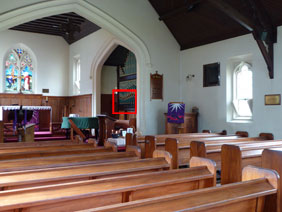 |
|
To compare noise levels under real-life conditions we shot this scene with the Panasonic Lumix DMC-TZ20 / ZS10 and Canon IXUS 1000 HS / PowerShot SD4500 IS within a few moments of each other using their best-quality JPEG settings and at each of their ISO settings.
The lenses were adjusted to deliver as close a field-of-view as possible. Each camera was set to Program to see how they performed with default settings; Contrast enhancers were disabled as they can introduce noise. Note: a PowerShot S95 comparison is lower on the page.
The image above was taken with the Panasonic Lumix DMC-TZ20 / ZS10 at 100 ISO with an exposure of 1/2 and the lens set to 6mm f3.7; the original file measured 5.48MB. As stated above, we allowed each camera to automatically select its own exposure in Program mode, in order to compare how they performed under default settings.
The Lumix TZ20 / ZS10 and IXUS 1000 HS / SD4500 IS share (C)MOS sensor technology and essentially the same sensor size, but sport quite different resolutions. The Canon employs a relatively modest 10 Megapixel resolution compared to 14.1 Megapixels on the Panasonic. The larger pixel-pitch of the Canon should give it an advantage in light gathering power, but the higher resolution of the Panasonic may give it an advantage in resolving power – at least at lower ISOs.
The sequence below starts at 125 ISO for the Canon and 100 ISO for the Panasonic, and while the higher resolution of the latter is delivering a slightly tighter crop, the former is visibly cleaner. Neither may be described as being artefact-free, but the Lumix TZ20 / ZS10 image definitely exhibits more noticeable processing and noise artefacts at this point.
At 200 ISO, noise and processing levels have increased on the Canon, although it’s still looking crisper than the Panasonic. The Lumix TZ20 / ZS10 is still showing a degree of patchiness, although on the upside it’s arguably no worse than at 100 ISO.
With the sensitivity increased to 400 ISO, both cameras suffer from a drop in image quality with a softness and loss of saturation compared to lower sensitivities. Noise levels are visibly higher on both, but the Lumix TZ20 / ZS10 suffers from more artefacts than the IXUS 1000 HS / SD4500 IS.
At 800 ISO, the story continues with more noise from both cameras, but again the Canon enjoying a crisper, more detailed result. The Panasonic has become quite patchy at this point. Likewise at 1600 ISO where there’s a loss of saturation and detail from both cameras, but again better noise control from the Canon.
That’s the top of the ISO range at the full resolution from the Lumix TZ20 / ZS10, with higher sensitivities offered automatically at a reduced resolution in the High Sensitivity preset. Our example below was captured at 3200 ISO and 3 Megapixels. The Canon IXUS 1000 HS / SD4500 IS does however bravely offer a 3200 ISO option at its full resolution, and while it ain’t pretty, it’s much preferred to the Lumix TZ20 / ZS10’s 3200 ISO output at 3 Megapixels.
This comparison confirms what we suspected: the lower resolution of the IXUS 1000 HS / SD4500 IS allows it to gather more light per pixel and enjoy a higher signal to noise ratio. This coupled with superior processing delivers better-looking results at every sensitivity when compared at 100%. Of course this isn’t completely fair, as when images from both cameras are reproduced at the same physical size, the artefacts from the Lumix TZ20 / ZS10 become less apparent than below. This evens things up at the lower sensitivities, but at 800 ISO and above, the Panasonic produces worse-looking output even at the same reproduction size.
The desire to equip compact cameras with ever-increasing resolutions may be driven by market demands, but it can come at the cost of image quality at higher sensitivities. It’s not surprising to find Panasonic steadily increase the resolution of its super-zoom to remain numerically competitive, but we can’t help but wonder what it would have looked like with a lower resolution sensor employing the latest technology.
In the meantime, the IXUS 1000 HS / SD4500 IS may be out-featured by the Lumix TZ20 / ZS10, but enjoys an advantage in low light performance. Scroll down to see an additional comparison against the Canon PowerShot S95, who’s slightly larger sensor allows it to enjoy a slightly cleaner result at 400 ISO and up. Below this we have another set of results for the IXUS 1000 HS / SD4500 IS which you may find useful.
Another key rival for the TZ20 / ZS10 is Canon’s PowerShot SX230 HS, which aims for less noise with its lower resolution sensor. See how they compare in our Lumix TZ20 / ZS10 vs Canon SX230 HS High ISO Noise comparison.
There’s another string to the TZ20 / ZS10’s bow too, as it boasts an additional mode which captures a burst of images and combines them into one to reduce shake or visible noise. It’s something we’ve seen before from Sony with impressive results, but it’s the first time Panasonic has offered it. See how it performs on the Panasonic in our Lumix TZ20 / ZS10 Handheld Night Shot results page, or if you’ve seen enough, skip-ahead to our sample images or verdict.
Panasonic Lumix DMC-TZ20 / ZS10 | Canon IXUS 1000 HS / PowerShot SD4500 IS | |
 |  | |
100 ISO | 125 ISO | |
 |  | |
200 ISO | 200 ISO | |
 |  | |
400 ISO | 400 ISO | |
 |  | |
800 ISO | 800 ISO | |
 |  | |
1600 ISO | 1600 ISO | |
 |  | |
High Sensitivity Preset (here at 3200 ISO and 3 Mpixels) | 3200 ISO | |
 | ||
Higher sensitivities not available under test conditions | Low Light preset (here at 1600 ISO) |
Panasonic Lumix DMC-TZ20 / ZS10 vs Canon PowerShot S95 High ISO Noise
Panasonic Lumix DMC-TZ20 / ZS10 | Canon PowerShot S95 | |
 | ||
80 ISO not available | 80 ISO | |
 |  | |
100 ISO | 100 ISO | |
 |  | |
200 ISO | 200 ISO | |
 |  | |
400 ISO | 400 ISO | |
 |  | |
800 ISO | 800 ISO | |
 |  | |
1600 ISO | 1600 ISO | |
 |  | |
High Sensitivity Preset (here at 3200 ISO) | 3200 ISO | |
 | ||
Higher sensitivities not available under test conditions | Low Light preset (here at 2500 ISO) |
Panasonic Lumix DMC-TZ20 / ZS10: Handheld Night Shot versus Program (at 500 / 400 ISO)
Panasonic Lumix TZ20 / ZS10 results : Real-life resolution / Noise / Noise vs SX230 HS / Noise vs TZ18/ZS8 / Handheld Night Shot
Panasonic Lumix TZ20 / ZS10 results : Real-life resolution / Noise / Noise vs SX230 HS / Noise vs TZ18/ZS8 / Handheld Night Shot
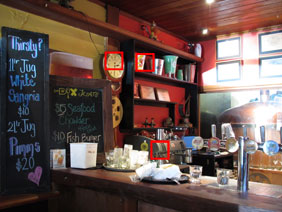 |
|
The Lumix TZ20 / ZS10 becomes the first Panasonic camera to feature a mode which stacks multiple images taken in a burst into a single image to reduce noise or shake.
On this page we’ve put the Lumix TZ20 / ZS10’s Handheld Night Shot mode to the test. This automatically selects the sensitivity so we’ve compared it against the closest manual ISO setting in traditional modes.
Our first example was taken in a dim bar where Handheld Night Scene automatically selected a sensitivity of 500 ISO. Unfortunately the Lumix TZ20 / ZS10 doesn’t offer manual ISO increments 1/3EV apart, so we had to choose either 400 or 800 ISO for comparison. In this first example, we’ve given the standard mode a slight advantage by selecting 400 ISO.
Looking at the crops below, the shot taken in Program at 400 ISO contains much more visible noise than the one taken in Handheld Night Shot at 500 ISO. As we’ve seen before, the presence of noise can give the impression of a sharper image, and this coupled with an absence of noise on the Handheld Night Shot version certainly make the latter look soft in comparison.
But look closely and you’ll see there’s little if any difference in terms of real-life detail captured. This means the Handheld Night Shot mode has managed to retain a similar degree of detail, but with considerably lower noise levels – and this is even more impressive given it was actually operating at a sensitivity 1/3EV higher. Interestingly the Handheld Night Shot version has applied a slightly warmer white balance in this scene.
A good start for the new mode, but scroll down for another example.
Panasonic Lumix DMC-TZ20 / ZS10: Handheld Night Shot at 500 ISO | ||||
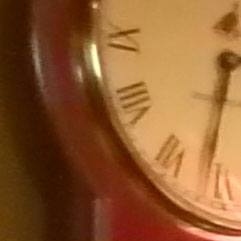 |  | 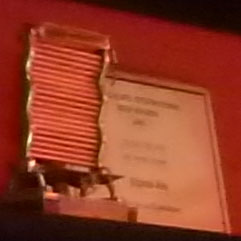 | ||
f3.3, 1/8, 500 ISO | f3.3, 1/8, 500 ISO | f3.3, 1/8, 500 ISO | ||
Panasonic Lumix DMC-TZ20 / ZS10: Program at 400 ISO | ||||
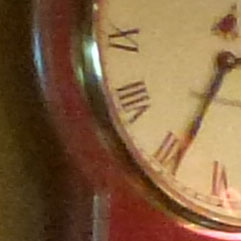 | 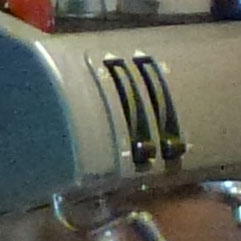 | 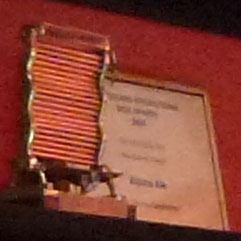 | ||
f3.3, 1/8, 400 ISO | f3.3, 1/8, 400 ISO | f3.3, 1/8, 400 ISO | ||
Panasonic Lumix DMC-TZ20 / ZS10: Handheld Night Shot versus Program mode (at 400 ISO)
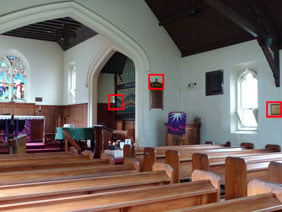 | |
|---|---|
In this second example we moved into the Church location used for our High ISO Noise comparison. Under these conditions, the Handheld Night Shot automatically selected 400 ISO, which made a direct comparison in Program mode easy to achieve.
In the crops below you can see a similar effect to that described above. The version taken in Program mode is visibly much noisier, which gives the Handheld Night Scene version an impression of softness. But look closely and you’ll again see similar degrees of real-life detail captured.
Interestingly as in our first example, the Handheld Night Shot version applied a slightly warmer white balance. We also noticed it captured a slightly broader area, automatically adjusting the focal length by a fraction from 7mm to 6mm. This is most likely to give greater latitude for matching frames which don’t perfectly line-up, while still delivering close to what you saw on the screen during composition.
Overall, this is another good result for the Lumix TZ20 / ZS10. Now for more real-life images, check out our Panasonic Lumix DMC-TZ20 / ZS10 Sample Images Gallery, or head straight over to our verdict!
Panasonic Lumix DMC-TZ20 / ZS10: Handheld Night Shot at 400 ISO | ||||
 |  |  | ||
f3.7, 1/8, 400 ISO | f3.7, 1/8, 400 ISO | f3.7, 1/8, 400 ISO | ||
Panasonic Lumix DMC-TZ20 / ZS10: Program at 400 ISO | ||||
 |  | 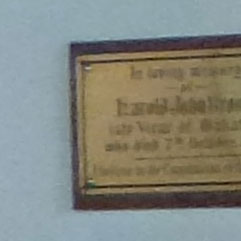 | ||
f3.8, 1/8, 400 ISO | f3.8, 1/8, 400 ISO | f3.8, 1/8, 400 ISO | ||

